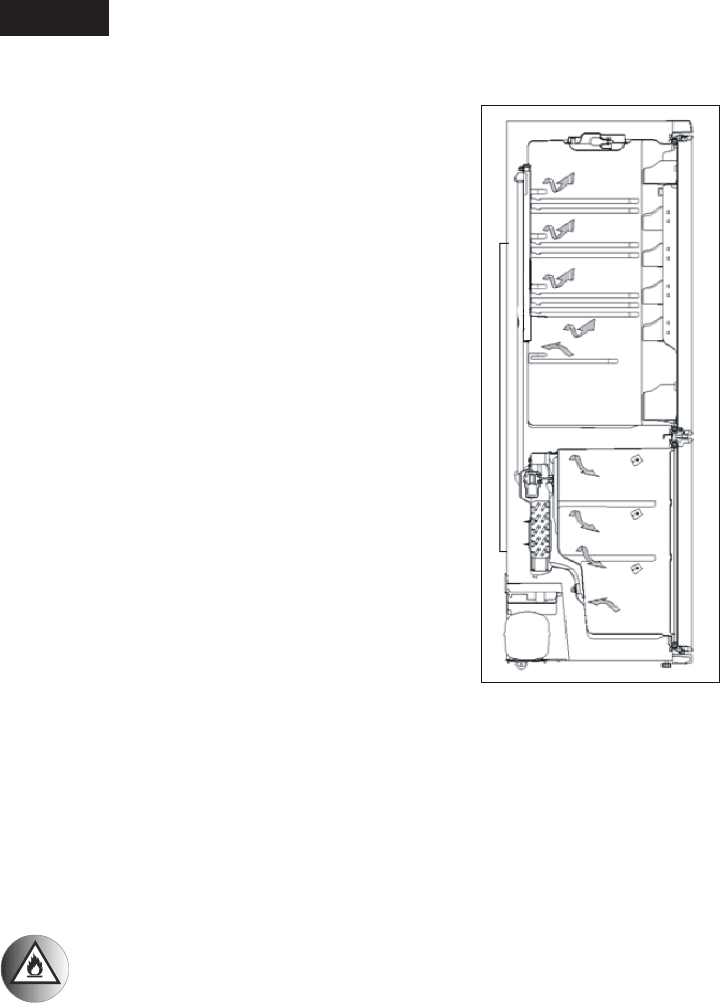
GB - 2 -
PART- 1. BEFORE USING YOUR REFRIGERATOR
Information on No-Frost technology
No-frost refrigerators differ from other static
refrigerators in their operating principle.
In normal fridges, the humidity entering the fridge due
to door openings and the humidity inherent in the food
causes freezing in the freezer department. To defrost
the frost and ice in the freezer compartment, you are
periodically required toturn off the fridge, place the food
that needs to be kept frozen in a separately cooled
container, and remove the ice gathered in the freezer
department.
The situation is completely different in no-frost fridges.
Dry and cold air is blown into the fridge and freezer
compartments homogeneously and evenly from
several points via a blower fan. Cold air dispersed
homogeneously and evenly between the shelves cools
all of your food equally and uniformly, thus preventing
humidity and freezing.
Therefore your no-frost fridge allows you ease of use,
in addition to its huge capacity and stylish appearance.
Safety Information
• While carrying and positioning the fridge, do not give damage to the cooler gas
circuit.
• If your old fridge has a lock, break or remove the lock before discarding it, because
children may get trapped inside it and may cause an accident.
• Old fridges and freezers contain isolation material and refrigerant with CFC. Therefore,
take care not to harm environment when you are discarding your old fridges.
IMPORTANT NOTES:
• If your appliance uses R600 as a refrigerant – you can learn this information
from the label on the cooler- you should be careful during shipment and
montage to prevent your appliance’s cooler elements from being damaged.
Although R600a is a environmental friendly and natural gas, as it is explosive,
in case of a leakage to be occurred due to a damage in the cooler elements
move your fridge from open flame or heat sources and ventilate the room
where the appliance is located for a few minutes.


















